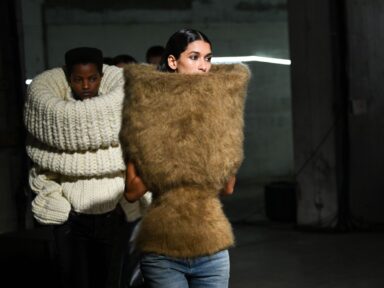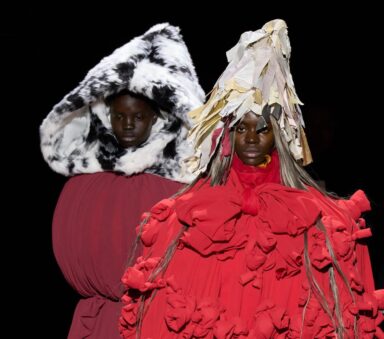FROM THE AMERICAN COLONISTS TO ALEXANDER MCQUEEN: THE EVERLASTING STORY OF PATCHWORK. SO GRAB NEEDLE AND THREAD THAT NOW IS YOUR TURN!
Text by Fiammetta Cesana
If you haven’t got social-wind yet, Alexander McQueen has launched a very creative, sustainable, and with an irresistible savor of yesteryear, initiative on Instagram this week, for the project #McQueenCreators. The invitation to its social media audience is to sew and then, of course, post a patchwork by using fabric scraps found at home and being inspired by the coat and suit presented with the fall winter 2020 collection. The two design garments, which paraded in Paris last March, were inspired by the quilt made by master tailor James Williams which comprises over four thousand patches, hand-sewn in sixteen years starting from 1842, and today exposed at the St. Fagans National Museum of History in Cardiff.

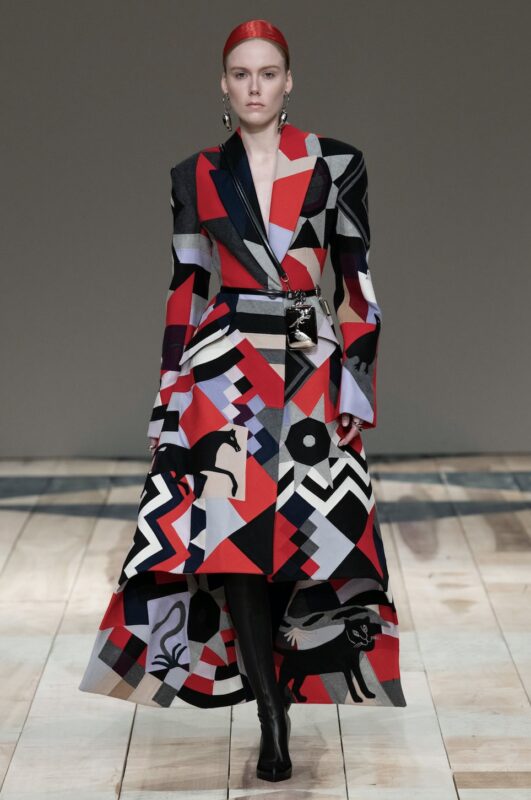
The British fashion house makes us take a dip in the past. Although the creation of fabric collages is widespread in today’s wardrobes, its history has in fact ancestral origins. The wives of the first American colonists, up to the pioneers of the 19th century, introduced the English manufacturing technique of Cowlte blankets, later called quilts, both as a need to cover the beds, the doors and windows, and as an actual social event. During periodic gatherings between local peasant communities, on the occasion of religious festivities and wedding celebrations, while men were building barns, women used to exchange new sewing techniques and fabrics while working on patchworks. They were the so-called “quilting bees”, the female get-togethers amongst manual labor and animated conversations.
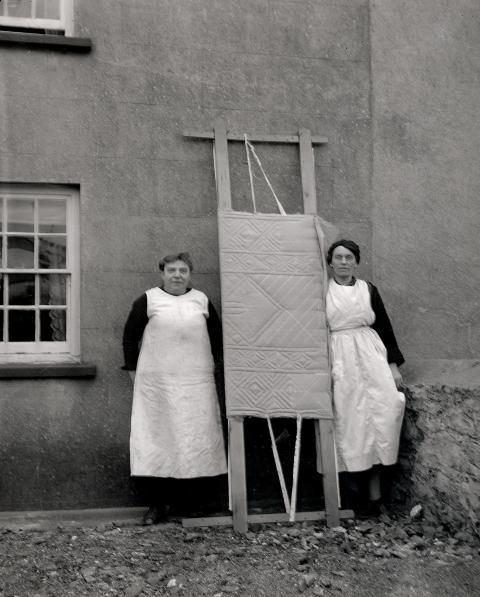
Born from the simplest form, the square, the Four Patch and Nine Patch, became the most used basic designs which, thanks to their versatility, still give life to an infinite number of motifs, including the famous Irish chain. Then to the square were added more complex geometric shapes and new textures, and each design was given a name, thus providing a documentation of the materials and social history of the time they were made. The quilts of the Welsh tailors, such as those of the master Williams who inspired McQueen’s winter items, were made of recovered flannel taken from samples and military uniforms.
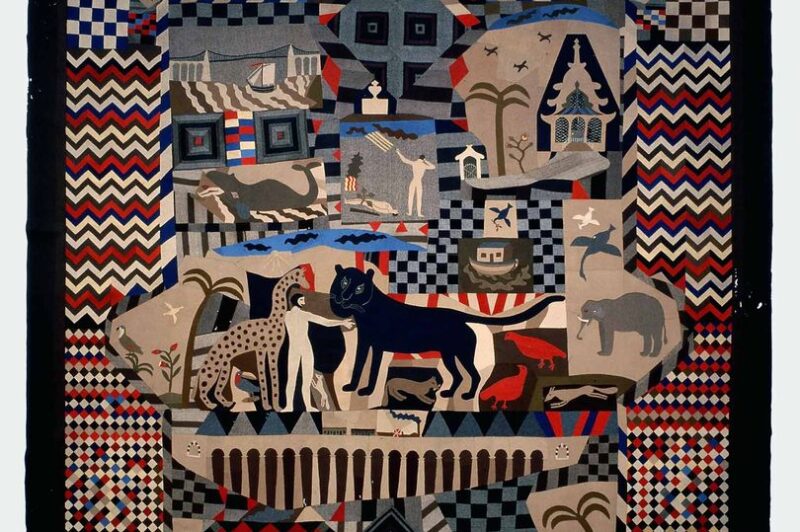
From Biblical references to occurrences of the Secession War, from the harvest’s tools to the famous “Long Cabin” inspired by the huts colonists used to live in, the designs became increasingly diversified, handed down from mother to daughter for generations. The mother started sewing quilts for her daughter since she was a child till thirteenth blanket, which was completed only when the latter got married. Quilts thus turned into a cultural, but also variegated artistic, legacy, which today makes up important collections of museums and associations.

An impressive collection of old quilts has been carried by Jen Jones, curator and owner of the Welsh Quilt Museum, which sadly closed two years ago, but the works are still traveling for international exhibitions. “Those quilts that have survived (sadly many have not) come into our own times as living emissaries of another age. They evoke the dexterity, imagination, and creativeness of people who somehow managed to produce such remarkable visual art from such humble and limited resources. What began for me as a salvage operation has evolved into a way of life.” Jones said in her book “Welsh Quilts”.
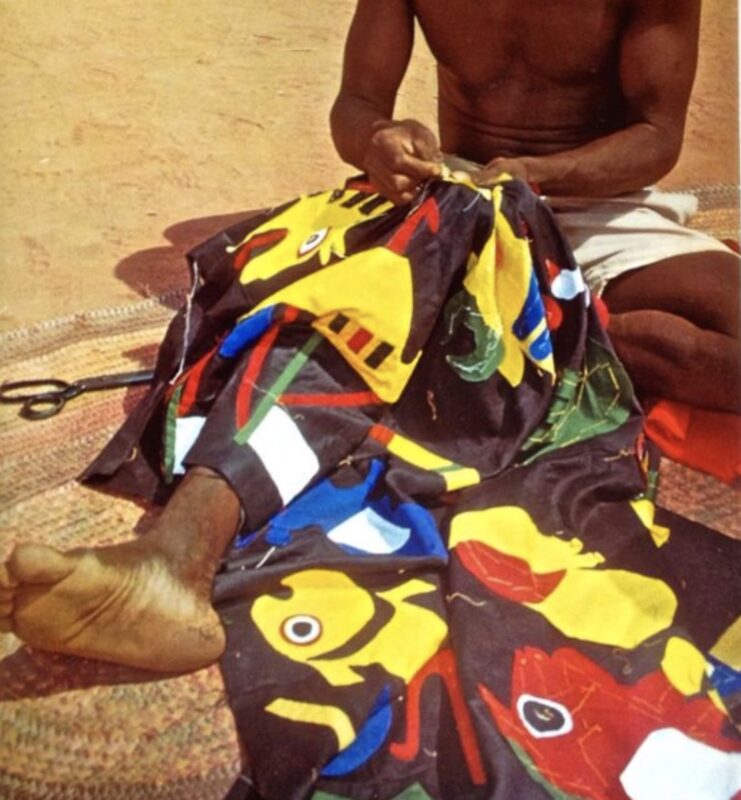
For twenty-five years the textile heritage of Treviso (North Italy) has been paying homage to this form of art with Patchwork Idea, a regular appointment that every year combines the creations of today’s and past quilters from all over the world. Last year it celebrated the genius of Leonardo Da Vinci for his 500th anniversary, while in 2018 was dedicated Nippon works. Not only the Western world indeed has a long tradition with patchworks, but also Eastern and African people who used to make with them warm clothes for the coldest season. In Japan in particular, the use of fabric scraps to create kimonos, clothes, bags and home textiles is widespread. Not only the patchwork, but also the technique for unstitching and reassembling the pieces of fabric, were passed down among the poor rural Japanese populations until the 20th century.
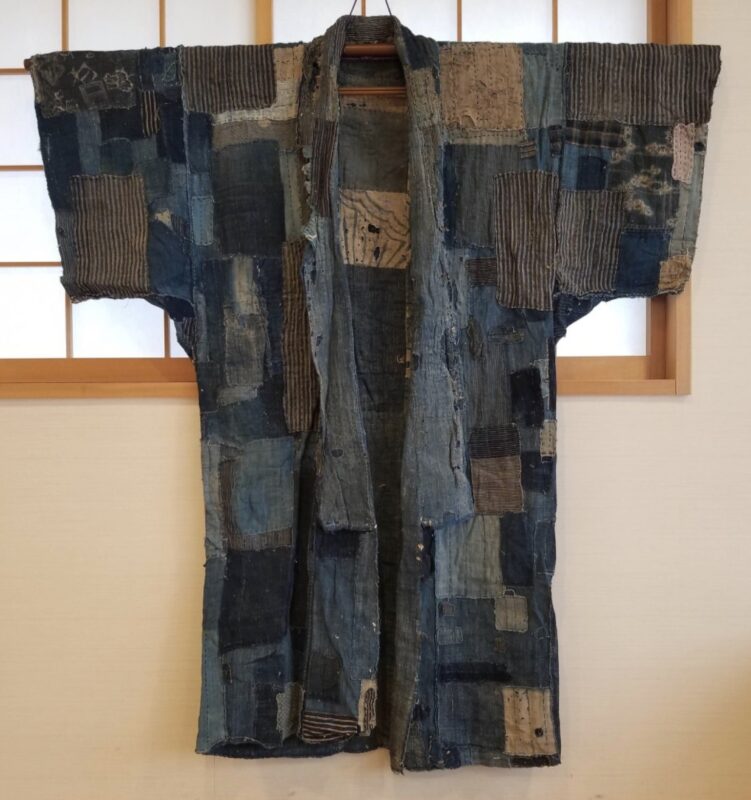
Although Singer’s sewing machine was introduced in the mid-1800s, most of the patchwork creations to date have continued to be made by hand. The greatest break with the past occurred later on during the counter culture at the end of the 1960s, when revolutionary youth refused manual jobs defined properly feminine. However, over the years, the feminist movements themselves had to retrace their steps by reconsidering the power and social impact that ancient collectives like the quilting bees got in history. The involvement of women in those male affairs such as politics and wars remained eternally recorded through the fabric cutouts of their quilts, depicting social and historical episodes of the time.

Today in fact, concerned about our planet’s well-being, still fighting for gender equality, and always in search of a personal refined style, there could be no better excuse than that proposed by McQueen to relive history in a glamorous and upcycling way!
So are you ready to continue this age-old tradition and join the 2020 version of the quilting bee?
Go and rummage in the drawers, the old boxes at closet’s bottom, or retrieve the garments you were thinking to throw away, and start sewing your patchwork. The best will be selected by Alexander McQueen and published on their social media profiles.
If you have no clue on how to create a patchwork, don’t worry. Here’s a video tutorial published on the brand’s Youtube channel that will explain you everything.
